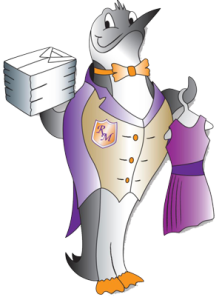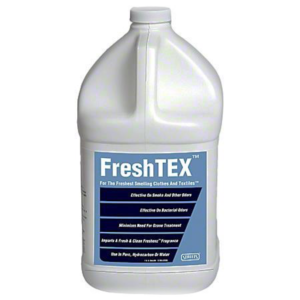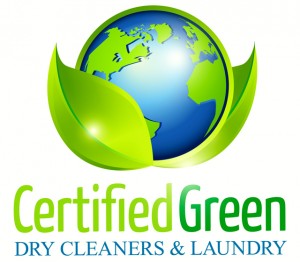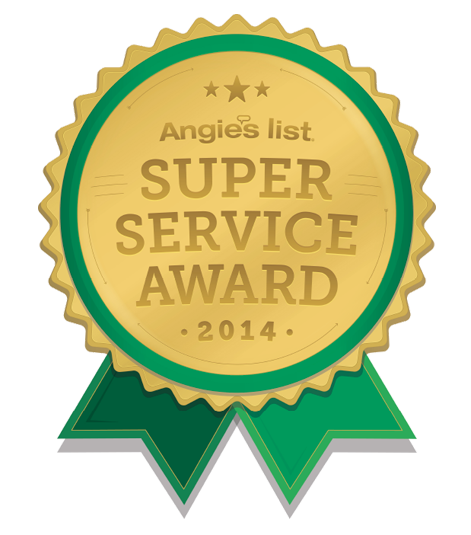Common Fibers:
Acetate – A synthetic fiber used for luxurious formal fabrics such as taffeta and satin, as well as garment linings.
Acrylic – The generic name for a synthetic fiber used mainly as a substitute for wool.
Angora – A very soft hair fiber from the Angora rabbit. It may be blended with rayon or wool fibers for a novelty effect.
Aramid – A generic name for a synthetic fiber that is very strong and highly flame resistant. Trade names are Nomex and Kevlar .
Camel Hair – A hair fiber made from either an Asian or African camel. Similar specialty hair fibers come from South American animals, such as, Llama, Alpaca, Guanaco and Vicuna.
Cashmere – Fine, soft wool obtained from goats native to Kashmir and Tibet.
Cellulose – Fibers that come from a plant source, such as cotton, linen, ramie and many forms of rayon.
Cotton – A natural soft fiber that grows around the seeds of the cotton plant. The fiber is most often used to make a versatile, soft, breathable fabric.
Flax – A soft, lustrous and flexible plant fiber, stronger than cotton but less elastic. The best grades are used for linen.
Linen – Linen is a material made from the fibers of the flax plant. Used mainly for lightweight summer clothes. It is strong, durable, and resists rotting in damp climates.
Lycra -Invista’s registered trademark for a synthetic fabric with elastic properties known generically as “spandex or elastane”
Lyocell – A fiber made from wood pulp with many similar properties as rayon. It is marketed under the trade name, “Tencel”.
Microfiber – A very thin, soft synthetic fiber made from polyester or nylon or a blend of polyester and nylon. Popularly used for clothes because it is lightweight, soft, cool and wicks moisture away from the body. It can feel like cotton or silk.
Mohair – Mohair is produced from the hair of the Angora goat. This fabric is durable, warm, insulating, and light.
Nylon – A generic designation for a synthetic fiber produced originally as a replacement for silk.
Olefin – A heat sensitive synthetic fiber most often used in carpets, but can also be used in components of clothes. Olefin is also referred to as polypropylene.
Polyester – A synthetic fiber that can be made into many fabric forms. It can simulate many other fibers, such as silk and rayon, thus is very popular in clothing.
Polyurethane – Polyurethane is a unique material that offers the elasticity of rubber combined with the toughness and durability of metal. It is used mainly as a coating material for many fabrics, such as coats and ski wear.
PVC – The shortened term for polyvinyl chloride, a hard thermoplastic material. When PVC is made softer by special chemicals, it is used in upholstery and clothing. It can simulate leather.
Rayon – The generic name for a cellulose-based man-made fiber. Rayon can have characteristics similar to those of cotton, linen, and silk.
Silk – A natural filament fiber produced by silk worms when spinning their cocoons that is popular for its natural luster and softness.
Spandex – A strong, stretchable synthetic fiber used as a replacement for rubber; common trade names of Lycra or Elaspan.
Tencel – The trade name for lyocell. See Lyocell.
Vinyon – A synthetic fiber made from polyvinyl chloride (PVC) and is used in fabric coatings and trims. It can be made to simulate leather.
Viscose – A type of rayon and sometimes is used interchangeably with the term rayon.
Wool – A versatile natural fiber derived from the hair of domesticated animals, usually lamb or sheep. Wool wicks moisture and depending on the type of fabric the yarn is spun into, can keep you warm or cool.
Common Fabric and Garment Terms:
Bias – The diagonal of a woven fabric between the warp (lengthwise) and the filling (crosswise) threads. This part of the fabric has the greatest amount of stretch and can easily be distorted in the cleaning and pressing process.
Blend – A fabric made from two or more fibers that will have the performance characteristics of both fibers (i.e., a cotton and polyester blend).
Bouclé – A rough, fairly thick, novelty yarn that gives a fabric a tufted or knotted texture.
Broadcloth – A tightly woven, plain weave fabric often made of cotton or cotton/polyester blends popular in shirts.
Brocade – A heavy jacquard weave fabric with a design, such as leaves and flowers, woven into it. Metallic threads are often used in brocades.
Calico – A woven cotton fabric usually with an allover floral print.
Chiffon – A sheer, lightweight, woven fabric originally made of silk but usually made from man-made fibers today.
Chenille -A fuzzy pile yarn that resembles a caterpillar or pipe cleaner. Commonly found in rugs, bedspreads, and bathroom accessories, but also used in sweaters, blouses, and dresses.
Chintz – A closely woven plain weave fabric with a shiny lustrous finish, often printed in bright floral designs.
Corduroy – A pile fabric in which yarns inserted in the weave have been cut to make narrow or wide ribs.
Crepe – A fabric with an overall crinkled surface that is made from yarns with such a high twist that the yarn actually kinks.
Damask – A flat, patterned fabric with plain and satin weaves produced on a jacquard loom much like brocade.
Denim – A twill weave fabric with a colored warp and white filling thread usually associated with blue jeans.
Fake fur – A common term for synthetic fabrics used to imitate animal pelts. Fake fur fibers are very easily damaged by heat.
Felt – A fabric made from wool, fur, or hair fibers that mesh together when heat, moisture, and mechanical action are applied.
Gabardine – A closely woven durable fabric recognized by a diagonal line. Mostly used for jeans and uniforms, the fabric can show shine when the raised lines are flattened in wear areas.
Fusible Fabric – A fabric with an adhesive coating that can be joined to another fabric by applying heat, moisture and pressure.
Interfacing – A woven, knit or non-woven fabric used to give additional body and strength to certain parts of garments. Some areas that usually contain interfacing include front opening edges, collars, and pocket flaps.
Jersey – A very thin single-knit fabric with a smooth surface on one side and a more textured surface on reverse. The word jersey is often used to describe any knit.
Knit – A method of making fabrics through the inter-looping of yarn. These fabrics are characterized by their ability to stretch and recover to the original shape.
Lace -Lace is an openwork fabric, patterned with open holes in the work, made by machine or by hand. There are many types of lace designs and mostly used for decorative trim.
Non-woven Fabrics – Fabrics made from fibers that are held together in a web by mechanical or chemical means or through heat. Some examples include felt and Ultrasuede.
Organza – A crisp transparent fabric usually made from silk, nylon or polyester.
Oxford – A fabric woven in a 2×1 basket weave and made of cotton or a cotton blend. It often has a thin, colored warp and a thick, white filling and is commonly used in shirts.
Pile – A fabric with an extra set of yarns inserted into the base of the woven or knit fabric to produce the “hair like” surface texture. Velvet, velveteen, corduroy, and fake fur are the most common pile fabrics.
Pilling – The tendency of short fibers to mat and form small balls or pills on the surface of a fabric. The length of the fiber and twist of the yarn will affect pilling.
Satin – Satin weave fabrics are characterized by yarns that float over four to seven yarns before being interlaced with yarns laid in the opposite direction. The floating yarns along the surface reflect light, which gives the fabric its luster. Satin fabrics can be made from silk or man-made fibers like acetate, rayon, nylon, and polyester.
Shell Fabric – The outer fabric of a garment or household item; sometimes called the base fabric.
Velvet – A fabric with a short, closely woven pile. It is usually made of rayon, acetate, silk, nylon, or a blend of these fibers.
Weave – Yarns interlacing at right angles. There are three basic weave types: plain, twill, and satin. All other weaves are variations of these. Some of the more common variations include basket, rib, and jacquard.
Woolen – A wool fabric made from loosely twisted yarns that have a somewhat fuzzy surface.
Worsted – A wool fabric with a clean, smooth surface made from tightly twisted yarns.
Yarn – A continuous strand spun from short (staple) fibers or long (filament) fibers. Yarns can be of low twist (lofty) or high twist (tight).
Common Terms on Fabric Finishes and Trims:
Bugle Beads – Tube-shaped beads originally made of glass although often man-made. Gold or silver coatings inside the tube may discolor with age or be removed in a dry cleaning process.
Easy Care/Wrinkle Free – Easy care, Wrinkle-resistant, wrinkle free, durable press and permanent press are textile-finishing terms that are used interchangeably. These terms all apply to various types of finishing agents that have been added to fabrics to prevent or decrease the amount of wrinkles.
Fire Resistant – Chemicals applied to fabrics to make them resistant to burning.
Flocked Fabric Finish – Small pieces of fiber glued or bonded to the surface of a fabric to alter the texture or create a design to imitate velvet or suede.
Mercerized – Mercerization is a treatment for cotton fabric and thread that gives fabric a lustrous appearance.
Nap – A fuzzy or soft down-like surface produced by brushing the fabric, usually with wire brushes.
Rhinestones – This decorative glistening trim is a diamond simulant made from glass, plastic, crystal or acrylic.
Sequins – Sequins are disk shaped flat beads used for decorative purposes. They are available in a wide variety of colors and geometrical shapes. Sequins may be sewn or glued to fabrics.
Sizing – A finish applied to yarns and fabrics to enhance their texture, weight and luster. Sizing is invisible, and, if removed in a care process, the shape and appearance of a fabric will be affected.
Stain Resistant – Special chemicals can be applied to fabrics and garments that allow them to “release” stains more readily when cleaned.
Starch – This is a special chemical compound that bonds with fabric during professional laundering to add body or stiffness. A starch is removed in the next laundry process.
Water Repellent – Special chemicals can be added to fabric surfaces to actually repel water during inclement weather. These can be applied by the clothing manufacturer or afterwards by a professional cleaner.
Common Cleaning Terms:
Bleeding – The running of dyes that aren’t colorfast in solvent or water. When the color runs it can stain other materials.
Colorfast – A term which implies that the color in a fabric will not be removed in the recommended cleaning procedure but may change or fade upon normal and expected exposure to sunlight or other atmospheric elements.
Dry cleaning – Dry cleaning is a type of cleaning done in a closed machine that cleans, spin and dries. This machine can use any number of special cleaning solvents other than water. Dry cleaning solvents are easier on clothes than washing, preventing shrinkage, color loss, and change of texture or finish, thus returning the garment to you in a ready to wear condition.
Finishing – Pressing or ironing done on specialized equipment. Drycleaners use many different pieces of equipment to professionally finish any type of household or wearable fashion. Such professional care gives garments a crisp, wrinkle-free, like-new appearance.
Life Expectancy – the useful life of a garment or household item under normal conditions. Contrary to the belief of some, frequent cleaning does not damage clothes. Frequent cleaning extends the life of a garment by removing stains and ground-in dirt and soils that can cause fiber abrasion.
Mothproofing – A chemical treatment given to fabrics that provides protection from insects without leaving the objectionable odors of mothballs. Some cleaners provide mothproofing as a service.
Odor Removal – Some cleaners specialize in odor removal and flood and fire restoration of water or smoke-damaged items. These cleaners use special chemicals and equipment in the elimination of the odors.
Preservation – Preservation is a special type of storage that helps prolong the life of a garment for years and years. Many cleaners specialize in the preservation of wedding gowns, christening gowns, and other family heirlooms.
Restoration – In addition to preservation, cleaners may specialize in the restoration of old wedding gowns, heirloom items, and antique textiles. These items often are very delicate and require great care and the level they can restore depends on their condition at the time they are brought in. It is not uncommon, though, for a cleaner to restore a wedding gown originally worn by a bride-to-be’s grandmother well enough that the bride can wear it in her own wedding.
Stain removal (spotting) – Drycleaners use complex procedures and special stain removal chemicals to remove stains. Different stains require different treatments, which drycleaners are trained to do. Why risk a disaster using an over-the-counter “all-purpose” stain removal product or trying a “home remedy” when you could rely on your drycleaner’s expert stain removal abilities?
Upholstery cleaning – Use portable equipment containing dry cleaning fluid or water solution to remove soils from furniture fabrics. Upholstery fabrics, including zippered cushion covers, are not made to withstand dry cleaning or laundering.
Wet cleaning – Wet cleaning is a professional water based process that uses specialized additives that are safe on dyes and fabrics to minimize shrinkage and color loss. Professional wet cleaning also includes stain removal and finishing, which returns the garment to you in a ready to wear condition.




